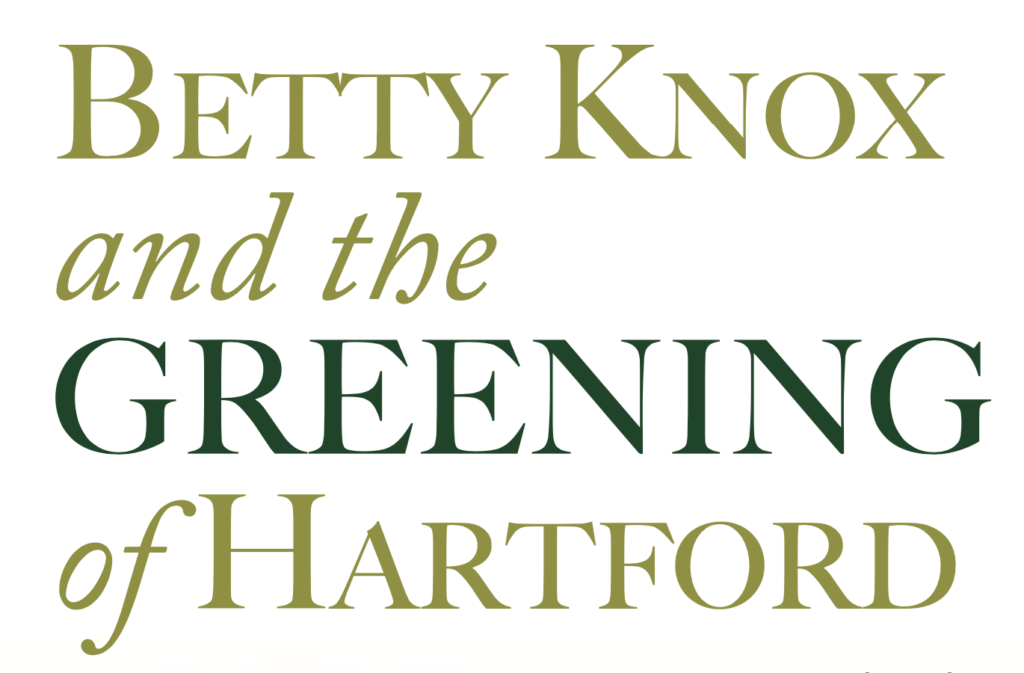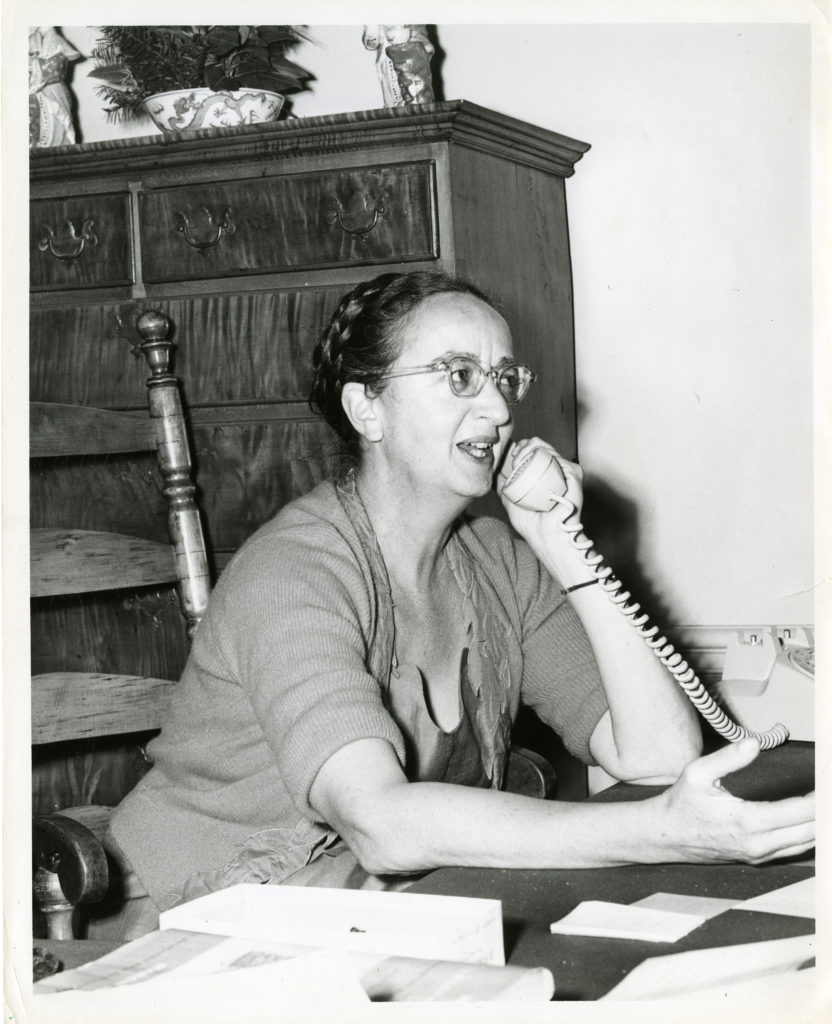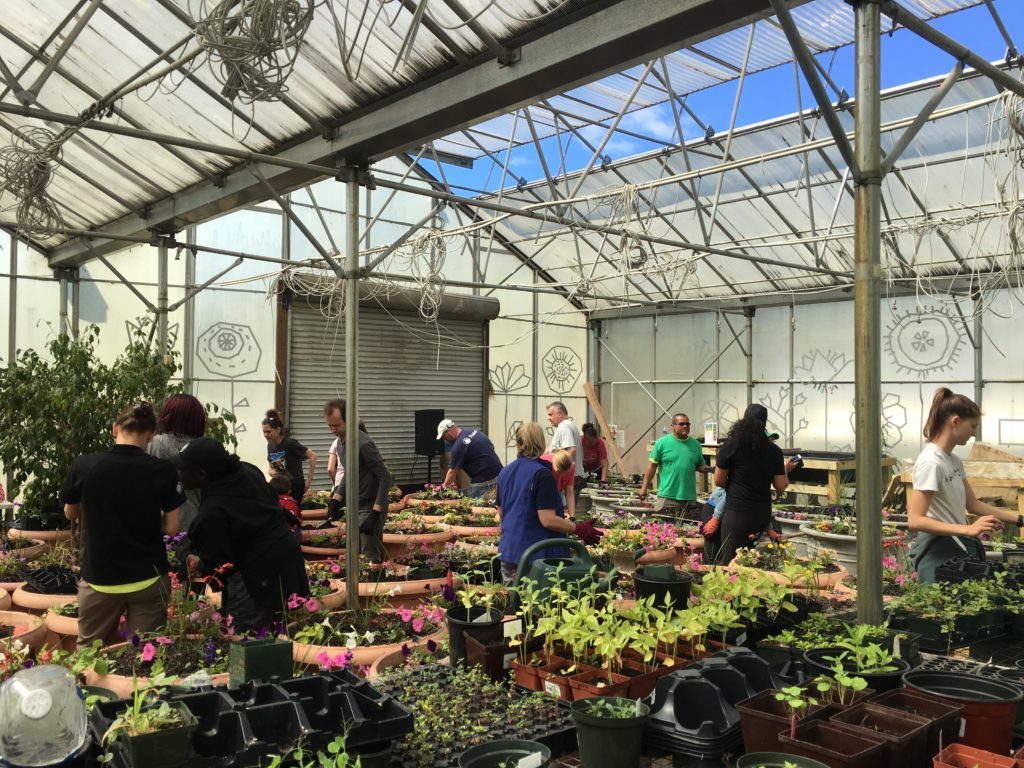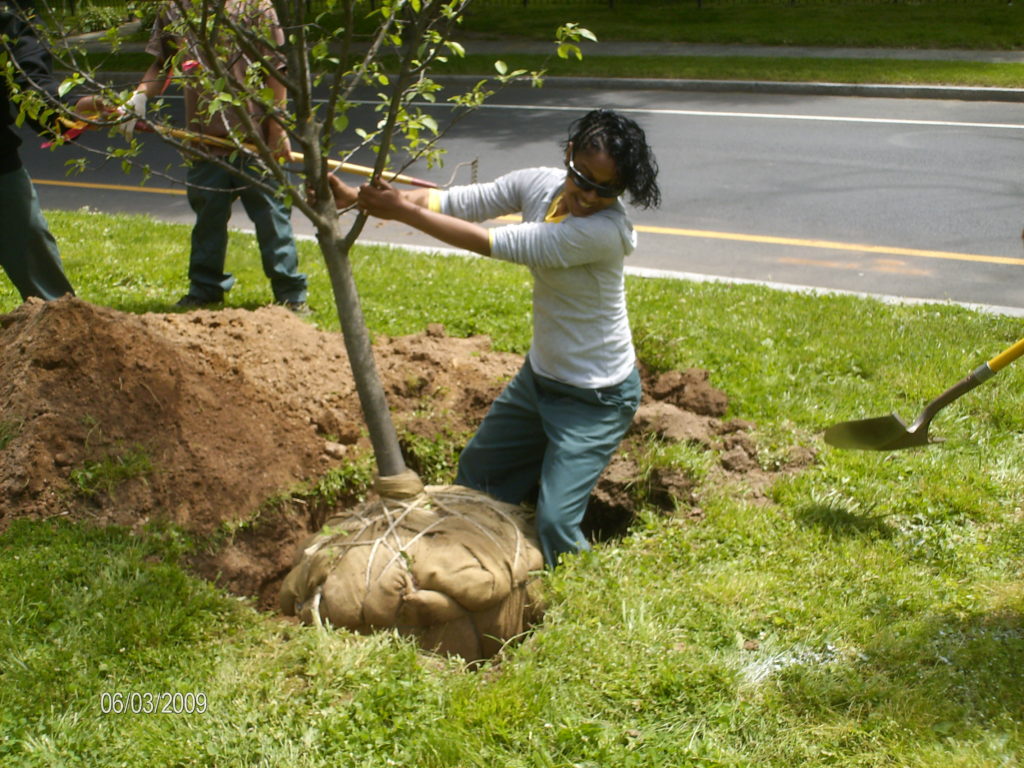(c) Connecticut Explored Inc. Summer 2021
Subscribe/Buy the Issue!
Anyone involved in the civic life of Hartford has likely come across the name Knox, whether in the form of KNOX Inc., an organization that uses “greening” programs to spur community development, or the Betty Knox Foundation, which provides small grants to organizations that help under-served Hartford residents. Both owe their existence to Elizabeth L. “Betty” Knox, a longtime philanthropist, political activist, and Hartford councilwoman who died in 1966.
Born in 1908, Knox was the daughter of Estelle Lethbridge Knox and Robert C. Knox, who in 1893 had founded R.C. Knox and Co. Inc., one of the largest independent insurance agencies in Connecticut. The family lived in a large house on Kenyon Street, near the West Hartford line; their vacation travels were noted in newspaper society pages. Betty studied drama at Yale University, and through organizations like the Junior League of Hartford she began working with children who were also interested in drama.
As World War II loomed, her volunteer work with the Junior League put her in a position to notice the needs of children. Families were pouring into the region to work at burgeoning defense plants like Pratt & Whitney. Many of these were single-parent families, creating a desperate need for day-care facilities. Fortune magazine vividly described the nation-wide problem in a May 15, 2019 article.
Knox responded by volunteering at the newly built Charter Oak Terrace housing complex’s recreation center. In a letter to the editor in The Hartford Courant published on October 8, 1966, fellow activist Bertha N. Bazinet recalled her first encounter with Knox at the center. Knox was “sitting on a small stool, smudges of fingerprints on her face,” Bazinet wrote. “There were at least two dozen little ones of all races trying to put their little arms around her neck. Others were trying to climb up on her lap. As she tried to give attention to them all at one time, she looked up at me and said, ‘Bless them, I love them all.’” In 1943 Knox opened a daycare center there, according to her Hartford Courant obituary (October 3, 1966). It appears not to have lasted much beyond the war’s end in 1945.
Knox being an inveterate joiner, the list of organizations to which she belonged (often in leadership positions) reads like a directory of Hartford civic groups at mid-century: the Community Chest, Family Service Society, Hartford County Rehabilitation Workshop, Travelers Aid Society, Volunteer Bureau, the YWCA, and others. But it was becoming president of the Hartford League of Women Voters (now the League of Women Voters of Greater Hartford) that opened the door to a life in politics.
In the years just after the war, Hartford politics centered on two words: charter reform. The government at the time was led by a “strong” mayor and a city council whose members were elected from neighborhoods, or wards. Critics called the system outdated and prone to cronyism.
Led by businesses and the professional ranks, a Citizens Charter Committee pushed for major changes, especially going to a “strong” council government, where a city manager ran day-to-day affairs and answered to a council elected on a non-partisan, citywide basis. In 1946 voters overwhelmingly approved them. Because of her involvement with the League of Women Voters, Knox sat on the Citizens Charter Committee, serving as its vice chair in 1951, according to her obituary. Knox remained an ardent defender of the new system for the rest of her life. [See “Politics of Change: Mayor vs. Manager,” Aug/Sep/Oct 2004.]
Her experience led Knox to run for a Hartford City Council seat in 1951. She won and served a total of six two-year terms. (Her only loss came in 1953, by 15 votes.) She stood out on the council not only as a woman, but as a Republican in a Democratic city. On August 25, 1965, amid disputes within the city’s Republican Party, Knox issued a statement saying she would not seek re-election that fall. “I am going to take a sabbatical,” she announced, according to the next day’s Courant. A little more than a year later, on October 2, 1966, she died of an apparent heart attack in her home at age 57.
Knox, who never married, left an estate that would continue her service. Her will assigned approximately $2.5 million, or more than $19.5 million in 2021 dollars, to the creation of a foundation devoted to beautifying her city. “As Miss Knox expressed the idea, the ‘spiritual’ slums, as well as the physical, must be removed if the city is to become truly beautiful,” Glenn Weaver and Michael Swift wrote in Hartford: Connecticut’s Capital (Windsor Publications, 1982).
For the next decade, the Knox Foundation kept a high profile in Hartford, beautifying the city through horticulture but also encouraging civic engagement and urban renewal. Community gardens and “mini-parks” sprung up around the city. Just two years after its founding, the foundation opened a small playground on Garden Street with a basketball court, climbing bars, and a grassy area with picnic tables. A July 8, 1968 story in The Courant reported that the park was created on land purchased by the foundation at the request of the Citizens Action in the Neighborhood (CAIN) organization. CAIN then received a grant from the foundation to supervise children’s activities there. A 1975 story in The Courant announced that 700 garden plots of 280 to 500 square feet of “tilled and fertilized good earth” in 16 city neighborhoods were available to residents for a small fee (and were free for those over 65). The lots were loaned or donated to the foundation by the landowners. “The community gardens project is designed to offer food (and to a lesser extent flowers), recreation, economy, and even therapy, explains project director John Alexopoulos,” the story noted. Under the direction of executive director and architect Jack Dollard, the organization also undertook some unusual forms of community renewal, particularly when it bought a 1913 carousel and sought to have it restored and installed in Bushnell Park. Two years of controversy ensued, with arguments over everything from where in the park to place it to whether the project was even legal. By 1977, though, the Bushnell Park Carousel was up and running.
In the mid-1970s the organization opted to split into two separate entities. One, the Betty Knox Foundation, continues to “promote the vitality of Hartford by making small grants to community non-profit organizations that are working to address Hartford’s most pressing social, economic and cultural needs,” according to its website. Recent grantees include Hartford Performs, which brings visiting artists into local schools, and the annual Hartford Fringe Festival, which provides a showcase for small theater events.

Connectikids, a nonprofit that focuses on education, enriching, and empowering Hartford’s youth, has received grant funding from the Betty Knox Foundation. Coursty of Connectikids
The other organization, currently named KNOX Inc., supports Hartford’s residents and environment through horticulture. Headquartered from 1978 to 2000 in the caretaker’s cottage of Elizabeth Park, KNOX Inc. now operates from property on Laurel Street in Hartford. Whether it’s helping residents maintain community gardens, planting trees, or equipping 1,000 volunteers for an annual clean-up of city parks, KNOX still adheres to Betty Knox’s goal of beautifying Hartford, according to Executive Director Patrick Doyle. It has planted an average of 500 trees per year. It also plants, distributes, and maintains 250 three-foot flowering planters for city thoroughfares each year. Its 23 community gardens serve more than 300 local families.
KNOX also pursues related programs that would meet with its namesake’s approval, Doyle says, programs, for example, that double as job-training initiatives. Out-of-work Hartford residents may apply for apprenticeships that focus on horticulture and that can lead to green jobs. KNOX Inc.’s environmental education curriculum exposes upwards of 1,000 schoolchildren per year to hands-on experiences about such things as growing healthy food—and the importance of eating it. Doyle says KNOX wants to “help the people of Hartford to be healthier, stronger, more resilient.” “We feel like Betty watches over us,” he adds. “Her spirit, which is about green space available for everyone in Hartford, is very much with us. I’d love for folks to come in and tell us about her.”
Kevin Flood is a freelance writer and editor who operates HartfordHistory.net, a website dedicated to the history of Connecticut’s capital city. He last wrote “The Boys & Girls Clubs of America Started Here,” Fall 2019.
This is one in a series of stories funded in part by the Hartford Foundation for Public Giving about the history of nonprofits that operate in the Greater Hartford region.
Explore!
Learn more about the Betty Knox Foundation at knoxfoundation.org.
Learn more about KNOX Inc. at knoxhartford.org.
GO TO NEXT STORY
GO BACK TO SUMMER 2021 CONTENTS
Subscribe/Buy the Issue
Sign up for our bi-weekly e-newsletter




